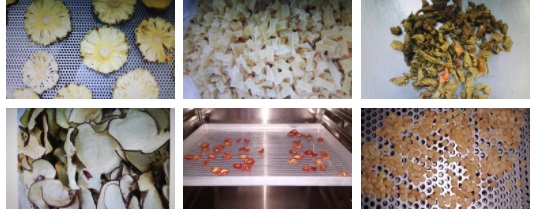Dehydration of fruit and vegetables is one among the oldest varieties of food preservation techniques well-known to man and consists primarily of establishments engaged in sun drying or by artificial means dehydrating fruits and vegetables. Though food preservation is that the primary reason for dehydration, dehydration of fruits and vegetables additionally lowers the price of packaging, storing, and transportation by reducing each the burden and volume of the ultimate product. Given the improvements within the quality of dehydrated foods, together with the multiplied specialize in instant and convenience foods; the potential of dehydrated fruits and vegetables is larger than ever.

Drying or dehydration is the elimination of the bulk of water contained within the fruit or vegetable and the primary stage within the production of dehydrated fruits and vegetables. Many drying ways are commercially available in the market and therefore the choice of the best methodology is set by quality needs, stuff characteristics, and economic factors. There are three types of drying processes:
- Sun and solar drying – Sun drying are used mostly merely for fruit and solar drying are utilized for fruit and vegetables of foods use the power of the sun to eliminate the moisture from the product. Sun drying of fruit crops is finite to climates with hot sun and dry atmosphere, and to destined fruits, such as prunes, grapes, dates, figs, apricots, and pears. These crops are processed in substantial quantities without much technical aid by simply spreading the fruit on the ground, racks, trays, or roofs and revealing them to the sun until dry.
- Atmospheric dehydration – Atmospheric forced-air driers artificially dry fruits and vegetables by transferring heated air with managed relative humidity over the food to be dried, or by transferring the food to be dried through the heated air, and are the most commonly utilized method of fruit and vegetable dehydration. Numerous devices are used to control air circulation and recirculation. Stationary or batch processes contains kiln, tower (or stack), and cabinet driers. Continuous processes are utilized commonly for vegetable dehydration and include tunnel, continuous belt, belt-trough, fluidized-bed, explosion puffing, foam-mat, spray, drum, and microwave-heated driers. Tunnel driers are the most flexible, well organized, and widely used dehydration system accessible commercially. (keninstitute.com)
- Sub atmospheric dehydration – Sub atmospheric or most commonly known as vacuum dehydration takes place at low air pressures and includes vacuum shelf, vacuum drum, vacuum belt, and freeze driers. The main motive of vacuum drying is to sanction the elimination of moisture at less than the boiling point below ambient conditions. Because of the overpriced installation and operating costs of vacuum driers, this process is utilized for drying raw material that may deteriorate as a result of oxidation or may be amend chemically as a result of vulnerability to air at elevated temperatures.
Package dried foods in glass jars, food-grade plastic storage containers, or plastic food-storage bags. Do confirm that the package has an airtight seal. It is a better and safe idea to package dried foods in small amounts, because after the seal is broked, the food can soak up moisture from the air and quality deteriorates.
We at KERONE have a team of experts to help you with your need for Dehydrating machines for fruits and vegetables from our wide experience.
